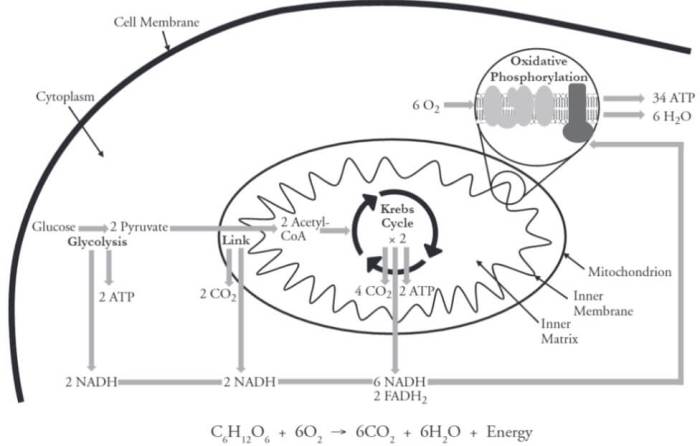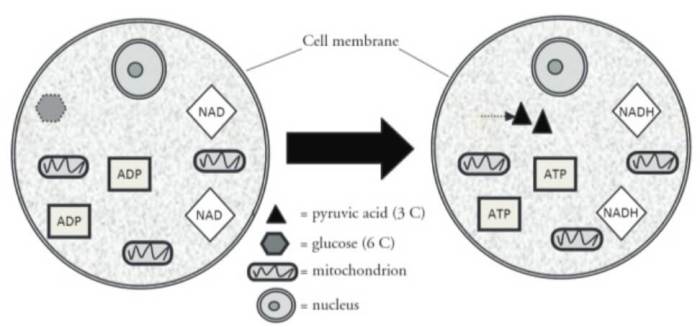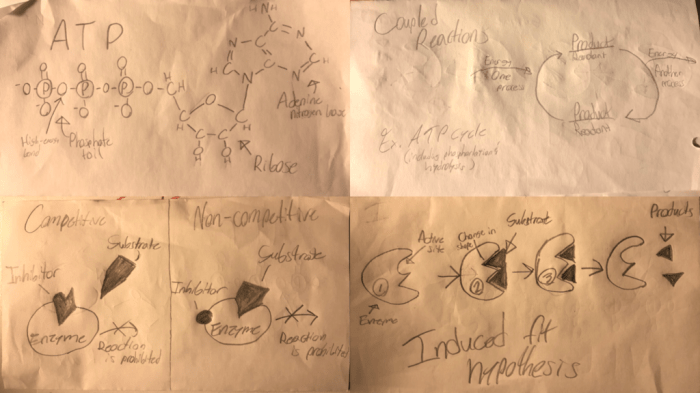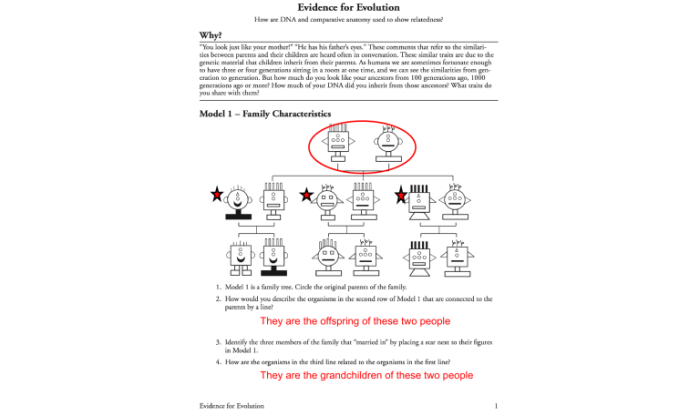Delving into the intricacies of cellular respiration, this comprehensive guide unveils the cellular respiration pogil answers key, providing a profound understanding of the fundamental process that fuels life. Embark on a journey through the stages of cellular respiration, deciphering the intricate interplay of reactants and products, and unraveling the mysteries of energy production within living organisms.
From the initial steps of glycolysis to the culmination of oxidative phosphorylation, this guide illuminates the intricate pathways of cellular respiration, empowering readers with a thorough grasp of the subject matter. Prepare to delve into the depths of cellular metabolism, unlocking the secrets of energy production and gaining invaluable insights into the very essence of life.
Cellular Respiration Overview
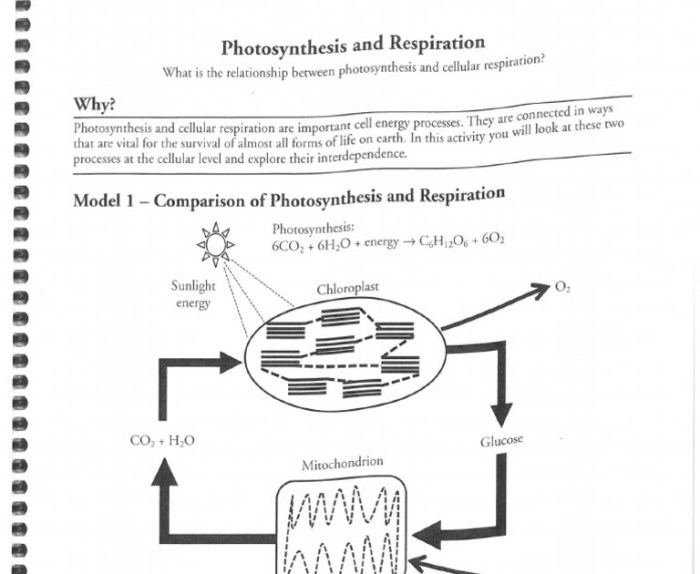
Cellular respiration is a set of metabolic reactions that take place in the cells of organisms to convert biochemical energy from nutrients into adenosine triphosphate (ATP), and then release waste products. This process is essential for the survival of all living organisms because ATP serves as the main energy currency for cells.The
overall chemical equation for cellular respiration is:C6H12O6 + 6O2 → 6CO2 + 6H2O + energy (as ATP)The reactants of cellular respiration are glucose (C6H12O6) and oxygen (O2). The products are carbon dioxide (CO2), water (H2O), and energy in the form of ATP.Cellular
respiration occurs in four main stages: glycolysis, pyruvate oxidation, the citric acid cycle (also known as the Krebs cycle), and oxidative phosphorylation.
Glycolysis
Glycolysis is the first stage of cellular respiration and occurs in the cytoplasm of the cell. It is an anaerobic process, meaning that it does not require oxygen.The steps of glycolysis are as follows:
- Glucose is phosphorylated to form glucose-6-phosphate.
- Glucose-6-phosphate is isomerized to form fructose-6-phosphate.
- Fructose-6-phosphate is phosphorylated to form fructose-1,6-bisphosphate.
- Fructose-1,6-bisphosphate is cleaved into two molecules of glyceraldehyde-3-phosphate.
- Glyceraldehyde-3-phosphate is oxidized to form 1,3-bisphosphoglycerate.
- 1,3-Bisphosphoglycerate is dephosphorylated to form 3-phosphoglycerate.
- 3-Phosphoglycerate is isomerized to form 2-phosphoglycerate.
- 2-Phosphoglycerate is dehydrated to form phosphoenolpyruvate.
- Phosphoenolpyruvate is dephosphorylated to form pyruvate.
The energy yield of glycolysis is 2 molecules of ATP and 2 molecules of NADH.The key enzymes involved in glycolysis are:* Hexokinase
- Phosphofructokinase
- Aldolase
- Triose phosphate isomerase
- Glyceraldehyde-3-phosphate dehydrogenase
- Phosphoglycerate kinase
- Phosphoglyceromutase
- Enolase
- Pyruvate kinase
Pyruvate Oxidation
Pyruvate oxidation is the second stage of cellular respiration and occurs in the mitochondrial matrix. It is an aerobic process, meaning that it requires oxygen.The steps of pyruvate oxidation are as follows:
- Pyruvate is decarboxylated to form acetyl-CoA.
- Acetyl-CoA is combined with oxaloacetate to form citrate.
The energy yield of pyruvate oxidation is 2 molecules of NADH and 2 molecules of FADH2.The key enzymes involved in pyruvate oxidation are:* Pyruvate dehydrogenase
Citrate synthase
Citric Acid Cycle, Cellular respiration pogil answers key
The citric acid cycle is the third stage of cellular respiration and occurs in the mitochondrial matrix. It is an aerobic process, meaning that it requires oxygen.The steps of the citric acid cycle are as follows:
- Citrate is isomerized to form isocitrate.
- Isocitrate is oxidized to form α-ketoglutarate.
- α-Ketoglutarate is decarboxylated to form succinyl-CoA.
- Succinyl-CoA is converted to succinate.
- Succinate is oxidized to form fumarate.
- Fumarate is hydrated to form malate.
- Malate is oxidized to form oxaloacetate.
The energy yield of the citric acid cycle is 2 molecules of ATP, 3 molecules of NADH, and 1 molecule of FADH2.The key enzymes involved in the citric acid cycle are:* Citrate synthase
- Aconitase
- Isocitrate dehydrogenase
- α-Ketoglutarate dehydrogenase
- Succinyl-CoA synthetase
- Succinate dehydrogenase
- Fumarase
- Malate dehydrogenase
Oxidative Phosphorylation
Oxidative phosphorylation is the fourth and final stage of cellular respiration and occurs in the inner mitochondrial membrane. It is an aerobic process, meaning that it requires oxygen.The steps of oxidative phosphorylation are as follows:
- NADH and FADH2 are oxidized to form NAD+ and FAD+.
- The electrons from NADH and FADH2 are passed through a series of electron carriers in the electron transport chain.
- The energy released from the electron transport chain is used to pump protons across the inner mitochondrial membrane.
- The protons flow back through ATP synthase, which uses the energy to synthesize ATP.
The energy yield of oxidative phosphorylation is 32-34 molecules of ATP.The key enzymes involved in oxidative phosphorylation are:* NADH dehydrogenase
- Succinate dehydrogenase
- Cytochrome c reductase
- Cytochrome c oxidase
- ATP synthase
Common Queries: Cellular Respiration Pogil Answers Key
What is the primary function of cellular respiration?
Cellular respiration is the process by which living organisms convert biochemical energy from nutrients into adenosine triphosphate (ATP), the universal energy currency of cells.
What are the four main stages of cellular respiration?
The four main stages of cellular respiration are glycolysis, pyruvate oxidation, the citric acid cycle (Krebs cycle), and oxidative phosphorylation.
Where does glycolysis take place within the cell?
Glycolysis occurs in the cytoplasm of the cell.
What is the net energy yield of glycolysis?
The net energy yield of glycolysis is 2 molecules of ATP.
What is the role of NADH in cellular respiration?
NADH is an electron carrier that plays a crucial role in the electron transport chain during oxidative phosphorylation, contributing to the production of ATP.
